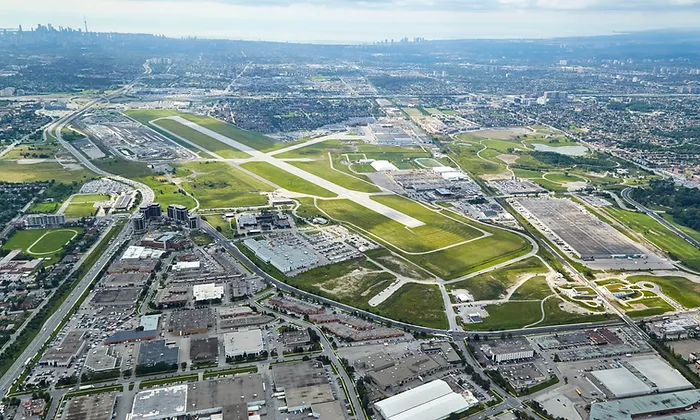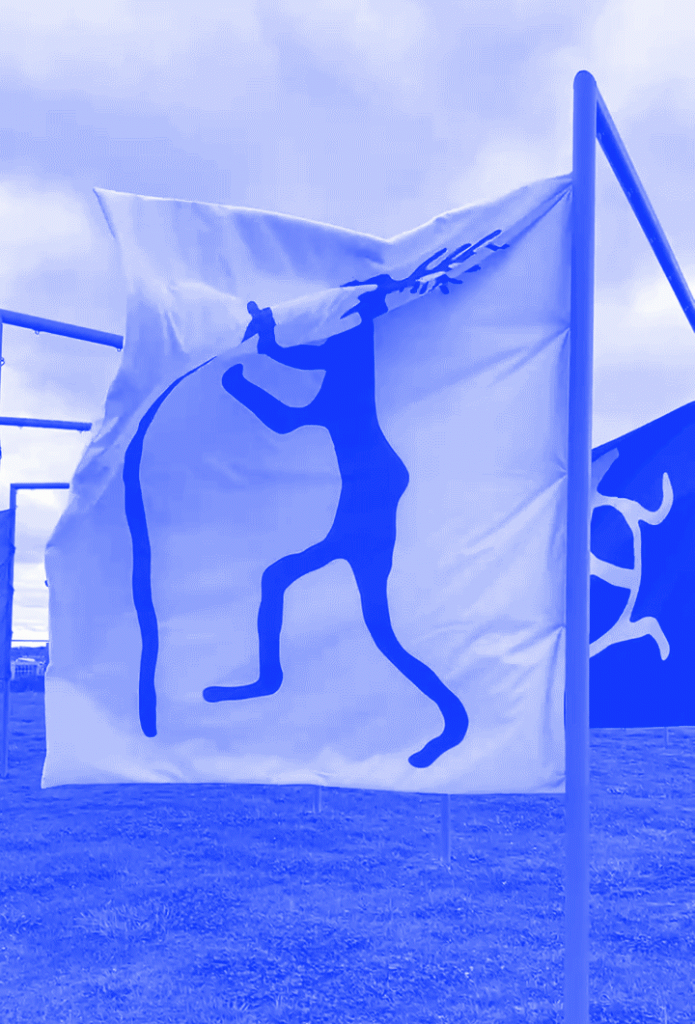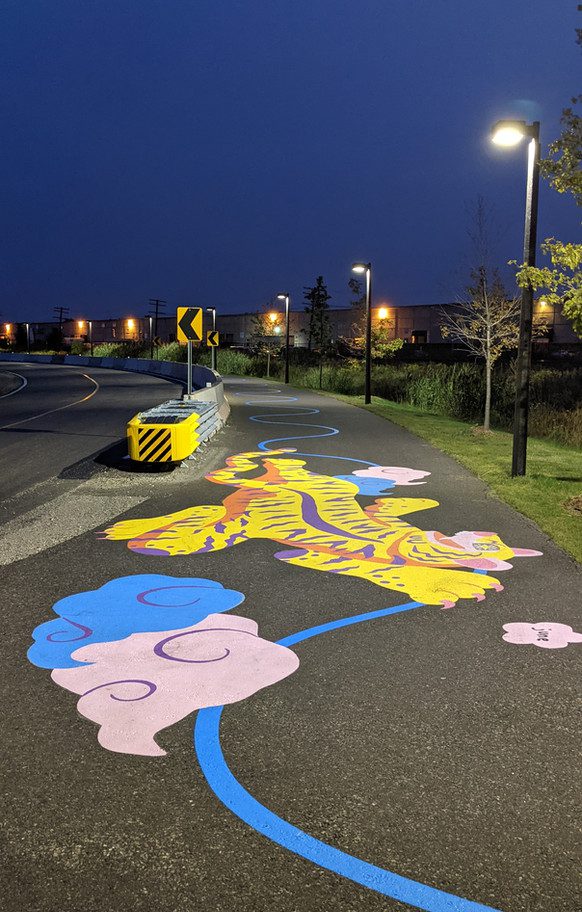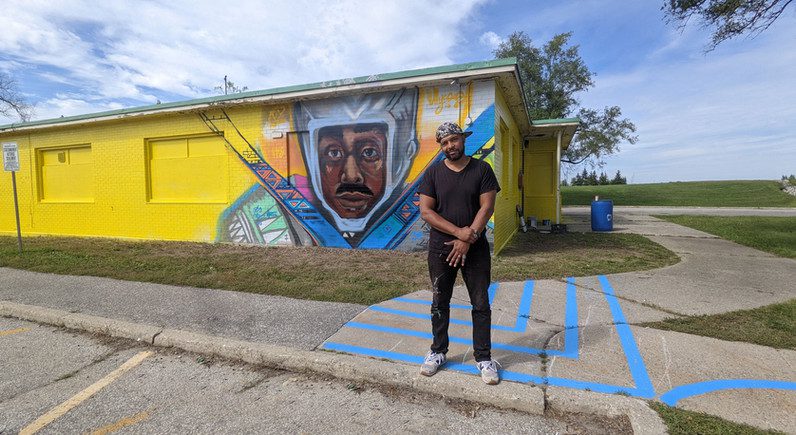Home /
During the Public Art of Tomorrow Symposium organized by MASSIVart on November 22nd, 2021, Jane Farrow and Mia Hunt from Dept of Words & Deeds discussed their work in Downsview collaborating closely with local artists to create new works and installations that activate and energize a vast development site in the northwest quadrant of Toronto.
Northcrest and Canada Lands Company are working together with local communities and other stakeholders to generate a shared vision and framework for roughly 520 acres at Downsview. This vision will prominently feature existing Downsview Park, which will remain at the heart of the community.
The goals and objectives of art and placemaking combine seamlessly with responsible and thoughtful development when local culture is prioritized and facilitated equitably.
 Our intention with this workshop was to provide tools and best practices to help people understand how to engage with the local community, to develop public and private partnerships, how to build a holistic strategy, how to implement research processes and in-depth analysis to create meaningful public artworks.
Our intention with this workshop was to provide tools and best practices to help people understand how to engage with the local community, to develop public and private partnerships, how to build a holistic strategy, how to implement research processes and in-depth analysis to create meaningful public artworks.
The Dept of Words & Deeds designs, leads and collaborates on a wide range of regional and local projects, including land use and transportation plans, culture strategies, park and public realm designs, walkability and wayfinding strategies and community development initiatives. Their approach to public engagement emphasizes creative collaboration and broad participation in transparent processes that heighten mutual understanding while identifying common ground and supported recommendations.
Jane Farrow, Public Consultation & Engagement, Principal & Founder of Dept of Words & Deeds, explained that vision and framework plan for the site will involve housing, workspaces, parks and community facilities arrived at through a planning and engagement process that will take place over many years.
Mia Hunt, Public Consultation & Engagement, Urbanist of Dept of Words & Deeds, has highlighted the fact that locals and city-wide residents have mentioned the importance of arts and culture in the short-term and in the long-term, aligned with the priority of honouring the land of Northcrest and Canada Lands.
It took a community-focused decision-making process to determine what to do concretely, agreeing on the importance of arts and culture to create a destination, to get people on site and to animate the area.
Farrow continued by saying that the site is not a blank slate, it’s a sprawling suburban area with an enormous amount of stuff going on. It’s important to work with locals on the ground to understand the place, the surrounding neighbourhoods, and how changes can contribute positively to what’s already working here.
Farrow added that it’s easy to have ‘cool’ art installations but they can easily be disconnected from the place and the people that surround them. It’s critical to the success of a good arts and culture program to be connected to its environment and communities. This is where the XOXO Downsview project came in.
 XOXO Downsview: A love letter to Downsview
XOXO Downsview: A love letter to Downsview
XOXO Downsview is a celebration of public art, culture, and local heritage launched in coordination with Toronto’s Year of Public Art. It involves dynamic installations, murals, multimedia works, and an audio walking tour on Downsview Lands and in Downsview Park. The projects highlight local artists, aim to bring people together and highlight the history and potential of Downsview as a destination and generator of cultural works.
To start the project, Hunt said that it took online surveys as well as discussions with creative communities. The voices that have been identified are diverse: young people, seniors, community groups, workers and employees, city-wide civic leaders, local and city-wide residents, local and city-wide business and economic interests, users of Downsview, resident associations, tenants, educational institutions and indigenous communities.
The collaboration seemed to be organic with the locals who helped identify local groups, to ask them what they value in their community, what could be improved and what opportunities they would like to see considered as part of XOXO Downsview.
 Wind Rose
Wind Rose
At the summit of Downsview Park, people can find the Downsview Wind Rose: a dynamic installation that celebrates the wind, the view, and the Indigenous connections to the area.
This interactive structure created by Future Simple Studio features a circle of vibrant blue flags attached to a radial network of 32 square arches arranged in a compass-like formation. They resemble a huge wind rose, a time-honoured tool invented by meteorologists that maps the direction, speed, and frequency of the wind in a specific location. The wind rose for Downsview, depicted on the concrete bench at the installation’s centre, is specific to the Downsview airport and shows the local area’s prevailing northwest winds.
Where those winds prevail, you’ll find the jewel of the Downsview Wind Rose: a set of flags designed by Chris and Greg Mitchell, Mi’kmaq artists who lead the design studio Born in the North. The work, called The Turtle and the Traveller, is based on the history of these lands and the local area. Because the flags are positioned at the installation’s northwest location, one is white, representing north on the medicine wheel, and one is the black, representing the west.
 Painted Path
Painted Path
Jane Farrow also presented the Painted Path activation. As there’s a lot of ground to cover, the goal was to have a much more pleasant walk around Downsview. Students, locals and indigenous artists were involved to tell different stories about the area.
Downsview XOXO’s painted path begins just south of Downsview Park Station, at the east exit. Jieun June Kim’s tiger—or “horangi”—welcomes the passersby and has been painted to bring good energy and symbolize courage and power, according to Korean folklore.
Then they can walk, skip, or jump along the colourful sequence of graphic lines that run for 1.2 kilometres through the Downsview Lands. These playful lines will be a canvas for many more local artists in the months ahead, including five artists from Just B Graphic.
Ulysses Curtis Mural by Danilo Deluxo
As Jane Farrow said, “Downsview is already awesome, we just want to amplify the stories, the people and the spirit of what’s there already.”
This is the case with this tribute to Ulysses Crazy Legs Curtis: a trailblazing Toronto Argonaut running back, much-loved educator, and local hero. Curator and artist Danilo Deluxo has transformed the former Downsview Fire Station into a canvas that celebrates the impact and achievements of this admirable man.

Audio Tour
Over eight parts, the audio tour weaves together the rich history and heritage of design, performance, architecture, music, and culture of the local area.
Hosted by Jane Farrow herself, this tour of the XOXO Downsview installations highlights the bold, vital spirit of Downsview. People can learn about the compelling and surprising history of music, art, heritage architecture, aviation, performance, and visual arts and how it all connects with the present day and plans for the future. You can listen to them here.
To the question “What are your tips on making sure every stakeholder and community groups feel heard and involved?”, Jane Farrow answered that for Downsview, they “built the airplane while they were flying” to get something happening on the ground but also figure out what’s the process by which you make decisions on what you want to say and who decides.
Farrow continued by explaining that you can’t involve all stakeholders in every decision but they try to be as broad, inclusive and diverse as possible.
The key is to have a working and living document. This document is influenced by a jury and an art advisory group that meet two or three times a year to discuss what to focus on. The process is to take advice from both and add them to a work plan to accomplish priorities, and then the client comes to the table to give inputs on artists or subjects. It worked well in the end knowing they wanted to be highly engaged with the community.
Hunt highlighted what Farrow said that it’s important to say that the work plan is a living document. As they will be working more with the local community and participants, the work plan will change.
She also continued by explaining that mentorship is important to the community, making sure that artists are all paid and feel fairly treated. It’s also important to support different kinds of arts and to support the local art community in any way possible.
Farrow added to this by saying that knowing people on the ground is where you start. It takes a “stakeholder mapping” to try to get the word out and see who is up for collaborating without forgetting anyone.
She continued by mentioning the tension point that can exist between institutions and artists. Artists have to be treated differently, they can’t wait 60 days to be paid and that’s something that they had to consider to be able to collaborate in the best conditions but also for artists to feel that their contribution has a real and meaningful value.
The discussion continued on the subject of the sticky or shifting points that can happen during a project. Jane Farrow explained that sometimes what can go wrong is when the client knows that they have a problematic situation but they don’t ask you how to help solve it. They come directly with the solution, meaning that they’re not interested in getting any value from what we can give them: which is understanding the problem and see how we might address it together.
To continue on this idea, about the question of “How do you resolve conflicts when stakeholders have opposite desires?”, Mia Hunt said the importance of knowing and explaining why someone’s outcome is not the preferred outcome. With the communities, if you’re engaging in a meaningful way, if you’re on the ground, people may not like the outcome but they know that it was fair and why it is what it is.
They concluded by recalling the importance of building mentorship opportunities, and by bringing together local and international artists.
To receive future opportunities and news, subscribe to the XOXO newsletter.
| Cookie | Duration | Description |
|---|---|---|
| cookielawinfo-checkbox-analytics | 11 months | This cookie is set by GDPR Cookie Consent plugin. The cookie is used to store the user consent for the cookies in the category "Analytics". |
| cookielawinfo-checkbox-functional | 11 months | The cookie is set by GDPR cookie consent to record the user consent for the cookies in the category "Functional". |
| cookielawinfo-checkbox-necessary | 11 months | This cookie is set by GDPR Cookie Consent plugin. The cookies is used to store the user consent for the cookies in the category "Necessary". |
| cookielawinfo-checkbox-others | 11 months | This cookie is set by GDPR Cookie Consent plugin. The cookie is used to store the user consent for the cookies in the category "Other. |
| cookielawinfo-checkbox-performance | 11 months | This cookie is set by GDPR Cookie Consent plugin. The cookie is used to store the user consent for the cookies in the category "Performance". |
| viewed_cookie_policy | 11 months | The cookie is set by the GDPR Cookie Consent plugin and is used to store whether or not user has consented to the use of cookies. It does not store any personal data. |